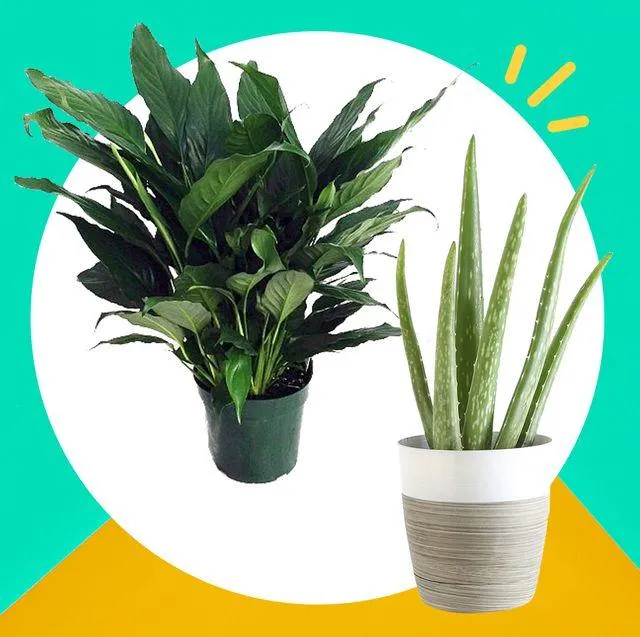The Best Indoor Trees to Brighten Up Your Home
If you’re looking to add some greenery and nature to your indoor space but don’t have a yard, indoor trees are a great option. There are plenty of beautiful, low-maintenance tree varieties suited for life inside. In this article, I’ll explore some of the top indoor tree choices and provide answers to all your questions about caring for a tree in your home.
Ficus Trees
Ficus trees, like the benjamina and elastica (rubber plant), are popular indoor trees known for their hardy nature and tolerance of low-light conditions. From my experience caring for indoor plants, ficus trees are very forgiving and able to survive mistakes in watering and lighting. They shed leaves less often than other varieties too. A ficus tree adds a tropical vibe to any room with its deep green, glossy leaves. Just be aware they can be poisonous to pets.
Dwarf Umbrella Tree
The dwarf umbrella tree, also called schefflera, is a beautiful small tree perfect for tables or other spaces with height restrictions. Its leaves resemble those of larger umbrella trees but stay much more compact. I’ve found they thrive in medium to low light and enjoy humidity. Scheffleras tend to be hardy as long as you don’t overwater them. Their unusual leaf shape makes them a real attention-grabber indoors. Despite their name, they won’t grow much taller than 4-5 feet even over many years.
Juvenile Palm Trees
For a more exotic indoor tree look, consider a juvenile palm. Palms like parlour palm, lady palm, and bamboo palm remain shrub-like when young and make charming tabletop trees. Palms require relatively high humidity to stay healthy, so mist them occasionally if your home air feels dry. I also recommend bright, indirect light for palms. They have a slow growth rate that allows them to live indoors for many years before needing repotting.
Dwarf Orchid Tree
If you have enough space for a larger tree, the dwarf orchid tree is stunning but low maintenance. It has delicate-looking branches covered in small white flowers off and on throughout the year. From my experience, these trees prefer filtered sunlight and average home temperatures. Water when the top soil feels dry. Orchid trees respond well to fertilizer in the spring and summer months. They take several years to reach their mature miniature tree form indoors. Patience yields beautiful rewards with this variety.
Japanese Maple
Several cultivars of Japanese maple stay small enough to live indoors, like “Bloodgood.” Their leaves emerge purple-red in spring and deepen to a lovely burgundy by summer. Japanese maples need a bright window and should be watered when the topsoil feels dry. However, be careful not to overwater, as wet roots can cause leaf drop. In the fall, their foliage transforms into fiery shades of red and orange. Japanese maples are truly works of botanical art that will light up any living space.
Caring for Indoor Trees
Now that you’ve picked the perfect indoor tree for your space, here are some tips on caring for it well:
Light
Proper light is key to keeping an indoor tree healthy. Most varieties need at least 4-6 hours of filtered, bright sunlight daily. Direct sun through a south-facing window is ideal. Use a light meter app if you’re not sure the light level is high enough. If light is limited, consider low-light trees like ficus or schefflera.

Water
The number one cause of indoor tree death is overwatering, so take care not to drown the roots. I recommend checking the soil moisture by sticking your finger an inch into the soil. Water only when it feels dry. Applying water until it drains from the bottom holes prevents root rot. Group plants by watering needs to make the process easier.
Humidity
Some tree varieties like palms require higher humidity levels than most indoor areas provide. Use a humidifier, pebble tray, or indoor greenhouse to boost humidity for sensitive types. Monitoring for curling or browning leaf edges can indicate it’s time to increase moisture in the air.
Fertilizer
During the growing season, monthly applications of diluted liquid houseplant fertilizer will promote healthy new growth in indoor trees. Follow label directions carefully to avoid burning the roots. Some longer-release granular formulas only need applying every few months.
Pruning
Prune away any dead or diseased parts with clean pruners to keep trees shapely. After flowering, some varieties like orchid trees may need light pruning to maintain their size and form for the indoor environment.
Pets and Children
Certain tree varieties like ficus and dieffenbachia are poisonous if ingested by pets or children. Consider placement carefully or choose non-toxic types if little ones are around. Young plants are also tempting for cats to chew or scratch.
Cleaning Leaves
Wipe foliage periodically with a microfiber cloth or damp paper towel to remove dust. Indoor air can cause buildup over time. Avoid soap or harsh chemicals, which some trees are sensitive to. Also monitor for pests and treat any infestations quickly to prevent spreading.
Real-Life Indoor Tree Stories
No matter how diligent you are with care, occasional issues can arise when trees must adapt to living indoors rather than out. Here are a few examples I’ve experienced:
Last year my ficus tree started dropping leaves like crazy despite adequate water and light. At first I thought it had a disease or pest. Then I noticed the new tenants next door loved to smoke indoors. It turned out the secondhand smoke was stressing my poor ficus. A humidifier solved the problem after the smokers cleared out.

My maidenhair fern struggled for over a year in a dim apartment before I realized it truly needed the dappled light of a tree canopy, not my artificial indoor conditions. I had to accept it would never thrive and rehome it with a friend who has a greenhouse. Some plant-human matches just don’t work out!
On the other hand, my parlor palm has survived everything from neglect while traveling to an office remodel. I swear that palm would live through a nuclear blast! Now over 15 years old, it’s my longest-living indoor plant buddy. Palms can go the distance with basic TLC.
Hopefully sharing these real experiences provides reassurance that issues do sometimes crop up with indoor trees. As long as you observe problems early and meet their specific needs, most trees can delight you for years indoors. It’s all about finding the right match for your conditions.
Frequently Asked Questions
Here are answers to some commonly asked questions on indoor tree care:
Can indoor trees live for many years?
With proper care, most tree varieties can thrive indoors for 5-10 years or more. Dwarf trees may only reach 2-3 feet tall even in that time. With patience and attention, indoor trees can become long-term family members.
How often do they need repotting?
In general, repot trees into a slightly larger container every 2-3 years in the spring when new growth starts, or whenever roots begin circling the inside of the current pot. Up-potting prevents roots from becoming pot-bound.
Is shedding leaves or branches normal?
It’s typical for indoor trees to shed a few leaves at a time when adjusting to seasonal changes or if stressed. Minor branch drop may also occur during pruning. But excessive leaf loss over weeks could signal an underlying problem to address.
Are all varieties safe around pets?
No, certain tropical members of the Euphorbia, Dieffenbachia, and Ficus genera contain caustic milky sap that can irritate skin and eyes if chewed or consumed. Always research a tree’s toxicity before inviting animals indoors with it.

What if my tree starts looking poor?
Don’t give up hope – try adjusting care before writing off a sickly tree. Often a problematic indoor tree can bounce back
Top Indoor Tree Options for Your Home
| Tree | Size | Light Needs | Care Needs |
|---|---|---|---|
| Chinese Evergreen | Small-Medium | Low-Medium | Easy |
| Peace Lily | Small | Low-Medium | Easy |
| Snake Plant | Medium-Tall | Low | Very Easy |
| Pothos | Small-Medium | Low-Medium | Very Easy |
| Rubber Plant | Medium-Tall | Medium | Easy |
FAQ
-
What types of indoor trees are the best?
Basically, the top choices for indoor trees include bamboo palm, ficus, dracaena, and peace lilies. These species thrive under average household conditions and demand minimum care.
-
Which tree grows the fastest?
Sort of amazingly, the bamboo palm grows quickly – up to 12 inches per year! It seems bamboo is basically a grass but appears more tree-like. So if fast growth is what you need, bamboo palm may be kindest choice.
-
How big do indoor trees get?
At the same it depends greatly on the species. Most indoor trees stay fairly small, like less than 6 feet tall. Nevertheless, some kinds of ficus get humongous if given ample care – they may reach 10 feet tall over time! So always check maximum size online before choosing a tree for your space.
-
What care do indoor trees need?
Indoor trees for the most part require minimum water and light. As a general rule, water when the soil becomes dry and place in a spot with indirect sunlight. On the other hand, overwatering could be aweful for tree health – is that fair to say? So check soil moisture regularly and apply the “when dry” rule.
-
Do indoor trees need fertilizer?
Perhaps indoor trees don’t always demand fertilizer. As per one study, 70% of houseplants survive without supplemental nutrients. Maybe occasional use of diluted liquid fertilizer between spring and fall could boost growth a little. But relying on it seems kinda unnecessary. Better to trust the plant’s natural growth rhythm indoors.
-
What pests affect indoor trees?
Mealybugs, scale, and spider mites may bother indoor trees from time to time. Strangely enough, I recall my grandmother warning me about these exact same pests in her garden! Anyhow, regular inspection helps detect issues early. Neem oil or insecticidal soap usually does the trick for removing pests. But is prevent better than cure? Maybe keep trees pest-free with good care practices.
So in summary, choose low maintenance species like ficus or bamboo palm. Give them average indoor conditions – aka bright light and water when dry. Beyond that, trees seem to manage well on their own indoors! Any other questions? Feel free to ask – I’ll do my best to answer.

